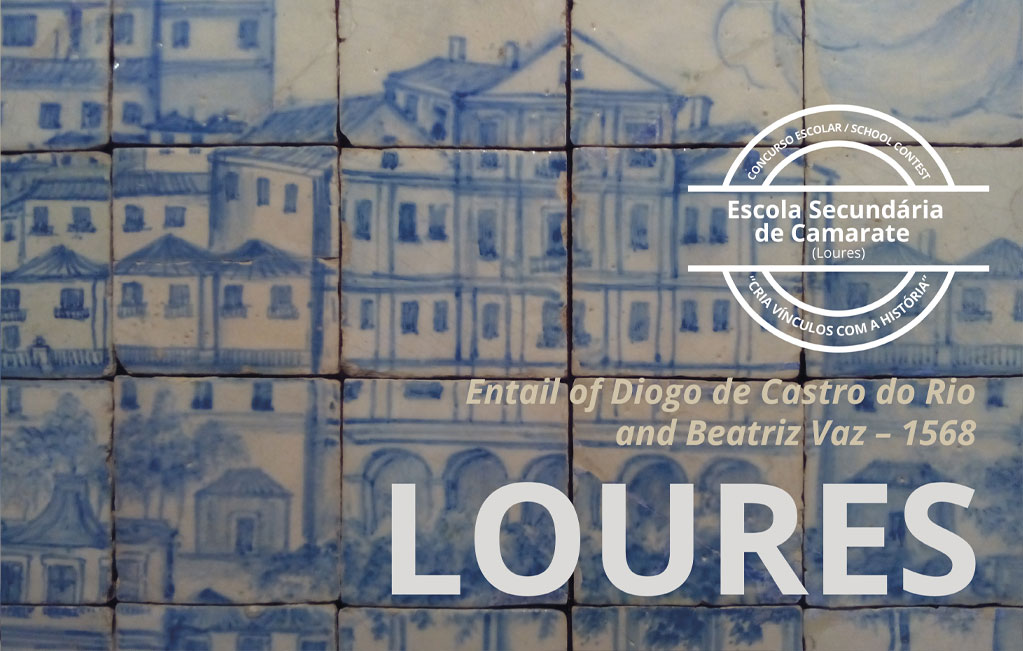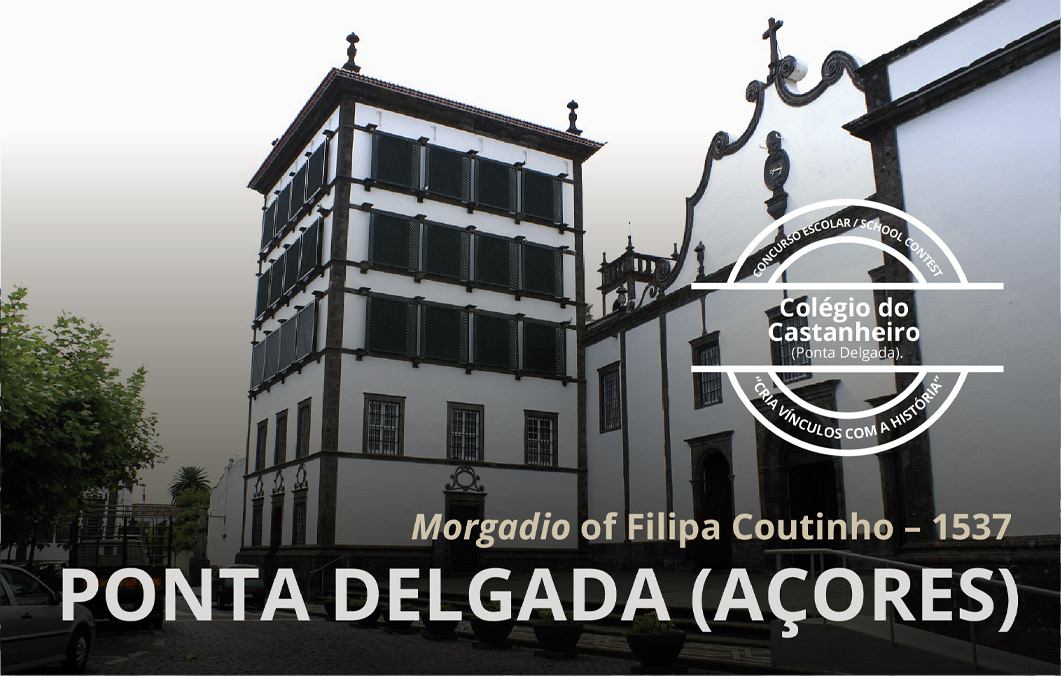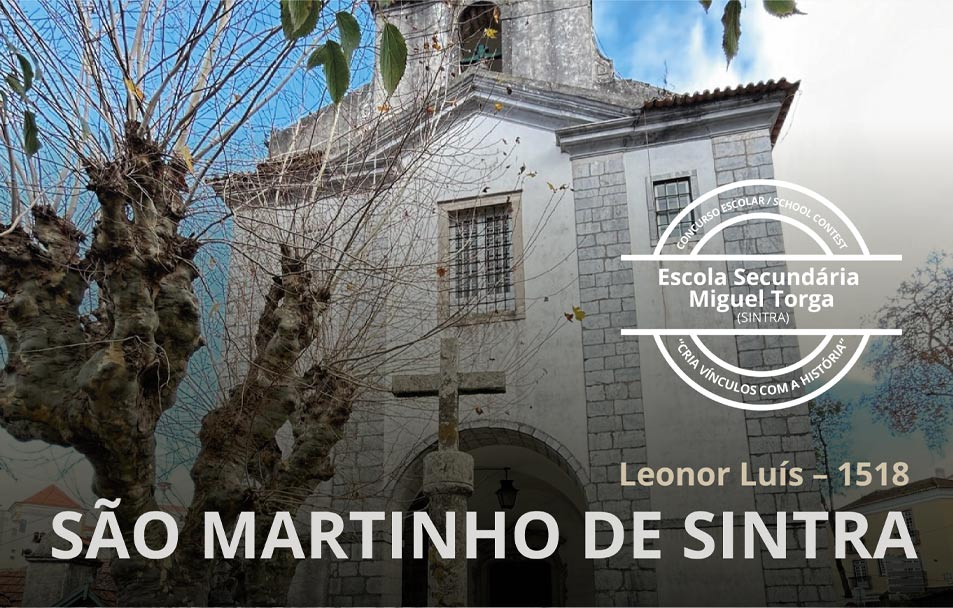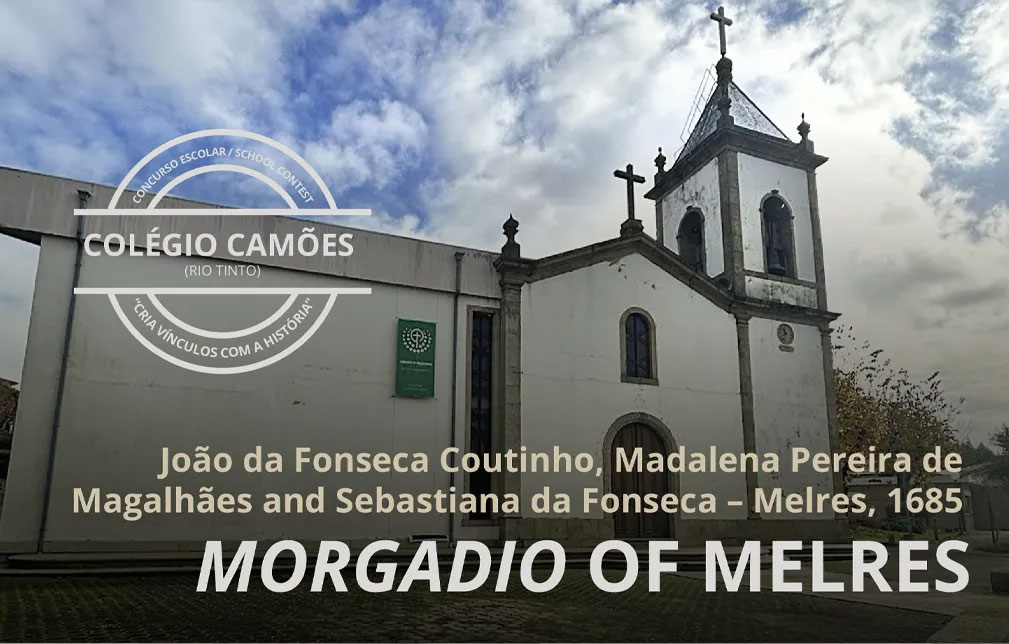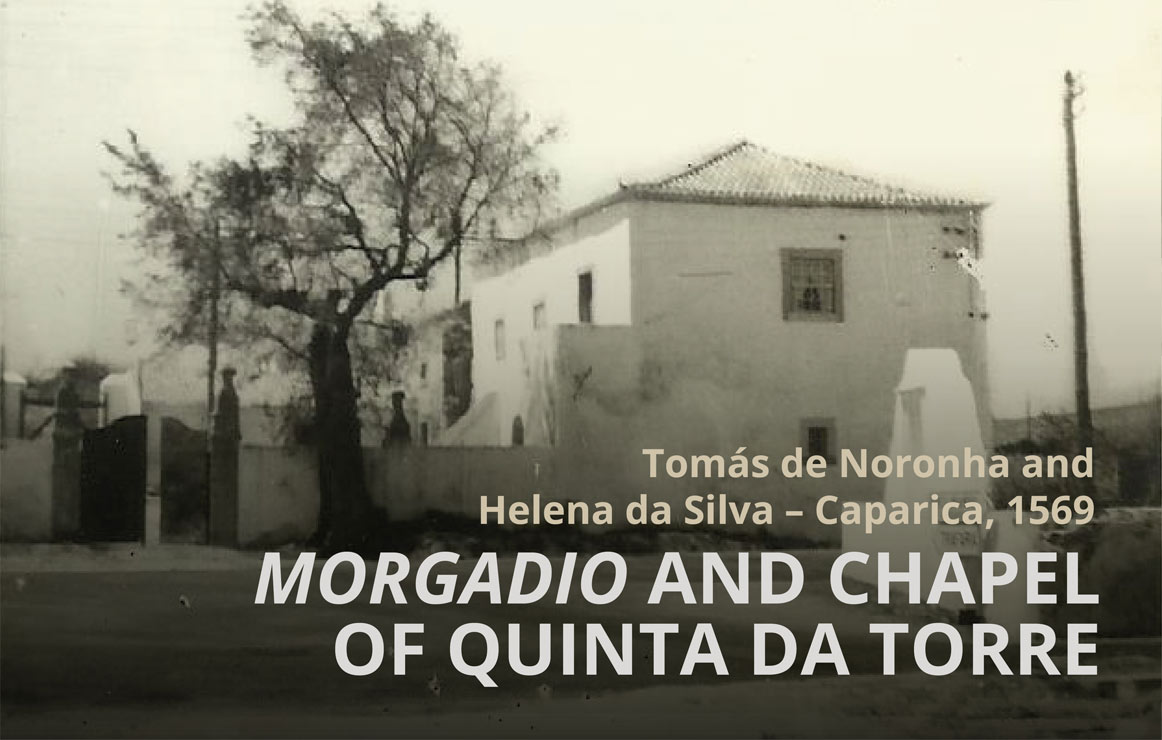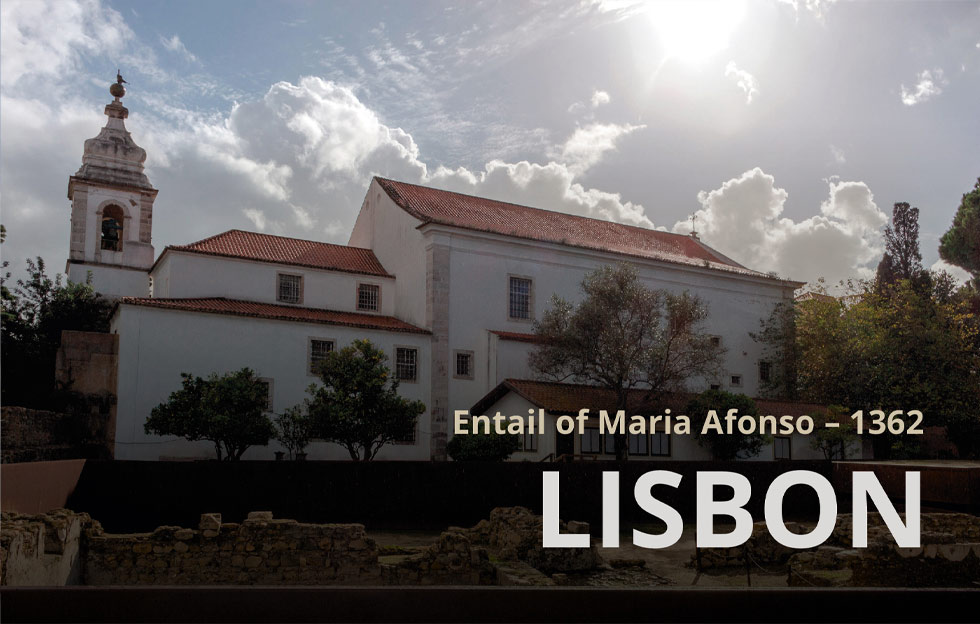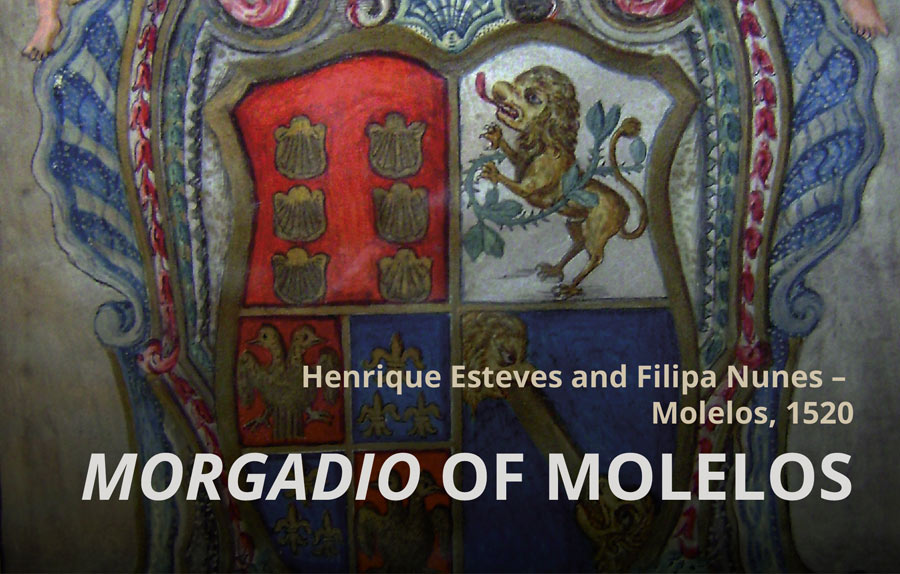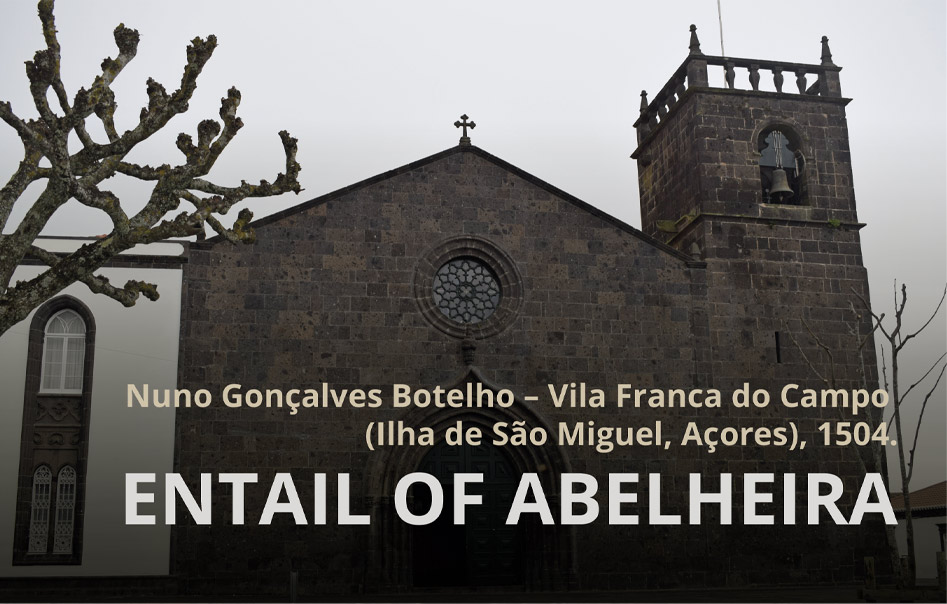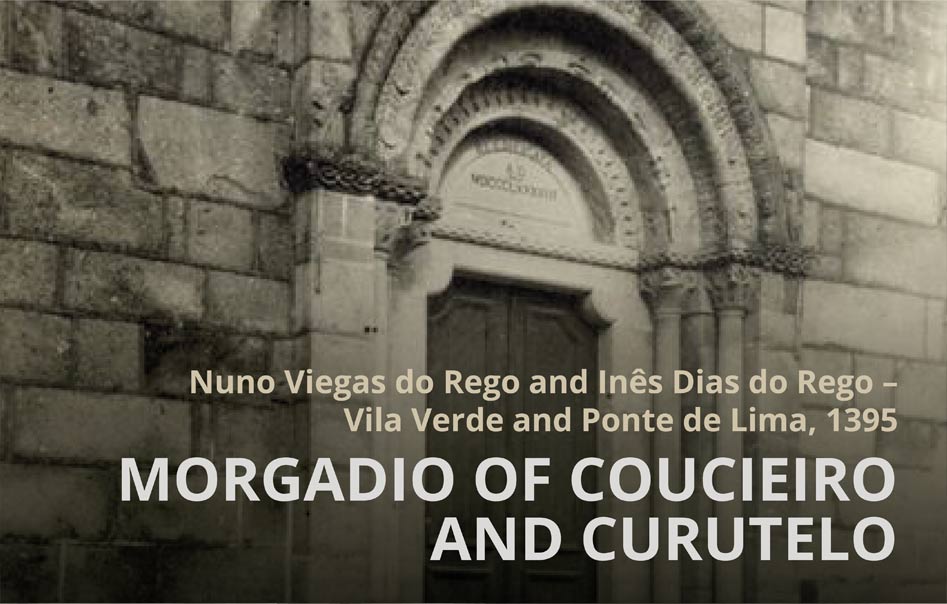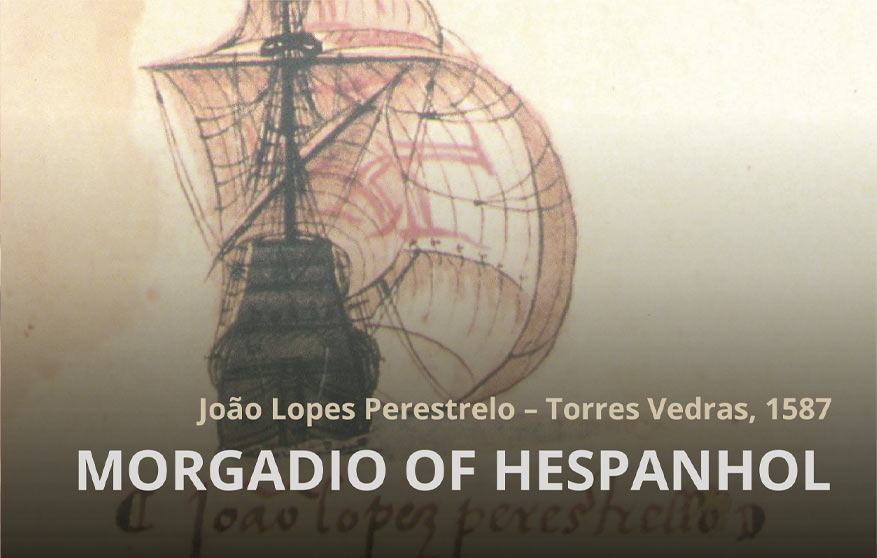Entail of the month (February, 2023)
Chapel of Nossa Senhora da Ajuda and morgadio of Piornais
António Favila and Maria de Vasconcelos, Funchal (Madeira), 1540-41
The link between the chapel of Nossa Senhora da Ajuda and the morgadio of Piornais is interesting on many levels. It benefits, first of all, from the existence of a monograph based on a vast and laborious archival work – documents from the Juízo de Resíduos e Capelas do Funchal (Arquivo Regional e Biblioteca Pública da Madeira), among which the accounts of administration, of difficult reading, stand out; documents from the Arquivo Diocesano do Funchal; several others, allowing the construction of working tools published in the book, which also includes the transcription of several unpublished ones. Then, in terms of historical interpretation, it allows us to bring up themes such as the entailment in the Atlantic space and its role in the colonization of territories quickly transformed into profitable societies – with profit being one of the substrates of the foundation, evident, among other things, in the luxury of the ornaments of the chapel; how this civil colonization was accompanied by the establishment of ecclesiastical circumscriptions, whose growth depended a lot on the lay founders and patrons of the temples; the means by which the general economic vicissitudes affected these institutions; the complex family relationships, sometimes of solidarity, sometimes of rivalry; and, in a final moment after the extinction of the entails, the existence of a desire for continuity, enshrined in the transmission of property by the last morgado, António João da Silva Bettencourt Favila, who died in 1876, childless, and whose will, of 1874, can be considered almost a perfect exponent of the long duration of the entailment mentality (PAREDES: 72-79).
Chapel of Nossa Senhora da Ajuda (Pionais, São Martinho, Funchal).
The chapel of Nossa Senhora da Ajuda and the morgadio of Piornais were founded by António Favila (d.1545), knight of the royal house, and his wife, Maria de Vasconcelos (d. 1544). The couple, through several legal acts, between 1540-1541, instituted a “morgado with chapel”, with succession by primogeniture in the male line, and endowed the chapel with the assets necessary for its existence. If the joint will where the entail is first created is not known, one of the foundational documents, the deed of endowment of the chapel, was preserved in the “Autos” ordered by the Archbishop of Funchal, D. Martinho de Portugal, in 1540 (PAREDES: 35-37; edition of the records: 213-223; deed: 218-219). The whole process conveys important details. The deed of endowment, dated January 7, 1541, describes the general characteristics of the small temple, indicates the successors and the form of succession, the charges and the endowment that would maintain them. The subsequent inspection, made late that year by ecclesiastical officials, allows us to know the primitive chapel, a clear testimony of what the entailed chapels of the “Ouro Branco” era would have been. Made of stone and lime, with a stonework door, a porch lined with cedar wood and a small belfry, it housed a valuable collection: “a new Flanders altarpiece, of the invocation of Nossa Senhora da Ajuda, sixteen palms open with the doors, and so high that reaches the lining, with some new white curtains with their fringe”; a “golden crucifix of Flanders”; utensils, furniture, towels and sacred garments, equally valuable and beautiful.
Picture of Antonio João da Silva Bettencourt Favila, 8th administrator of the entail.
The letter of confirmation of the patronage, of March 1541, closed this first phase of the entail’s life, authorizing the public worship in the chapel, which served the settlers of the neighboring farms, far from Funchal (PAREDES: 220-21). The clear illustration of the coexisting “private” relationship – without constituting a contradiction – is verified years later, when the founders are buried at the hermitage. The first morgado was to be the firstborn of António and Maria, Fernão Favila de Vasconcelos. Still in his generation, the nature of family pantheon is reinforced by the establishment of chapels, by two children of the founders, Maria and Duarte (1553 and 1556), added to that of their parents. No less interesting, and here indeed, with traces of originality, is the entail institution by a fourth sister, Inês Moniz, of August 28, 1587. Unmarried, having always benefited from the proximity of the brother morgado, enjoying the proper part of the inheritance, Inês leaves an entail to her nieces, with succession “by right female line” (PAREDES: 33-35). Although there are other cases, they are quite rare, which leads one to speak perhaps of a “feminist Favella” (PAREDES:33).
Not everything was easy in the subsequent life of the entail, in a pattern of events that will become, a century later, the main reasons for the advocates of the extinction of this type of property: the economic sustainability of the entails, the immobility of the property, and the succession disputes. The vicissitudes of the Madeiran economy, with the decline of the importance of sugar, would have played an important role in failures to fulfill the pious duties – in 1601, for masses not celebrated, the Juízo do Resíduo e Capelas seized the sugar production of the first morgado, who died that same year. The death, during his lifetime, of his son and successor, leaving only minor children, opened the frequent dispute between uncle and heir-nephew, frequent when the “right of representation” had not been consecrated in the foundation (ROSA:294-295). The dispute was won by the firstborn grandson of the first morgado, Fernão Favila de Vasconcelos, consecrating the succession in line of primogeniture. His condemnation in 1615, again for failure to fulfill pious duties, reveals systemic problems. The morgado blamed the chapel debt on his uncles, especially Diogo de Bettencourt Favila, who temporarily headed the entail; he attributed the lack of mass payments to the loss of papers from the dismembered ecclesiastical clerk’s office; and finally, he claimed that the alms stipulated by Duarte Mendes de Vasconcelos, his great-uncle, were excessive given the income from the morgadio. A sentence of September 12, 1628 released the morgado “Moço” of 900 thousand reis of debt (PAREDES: 53-54).
Signature of Fernão Favila de V asconcelos, first administrator of the entail.
He was to be succeeded by his nephew, Captain Pedro da Silva Favila de Vasconcelos – administrator of the Misericórdia of Funchal, councilman and juiz de fora. To him is owed the important action of preserving the entail documents, which demonstrates awareness of the relevance of keeping one’s own archive. He may have learned from his father, who considered himself a victim of the disorganization of the ecclesiastical registry; in any case, he followed a growing trend from the early 16th century, simultaneous to the complexification of the crown’s bureaucratic structures. He requested certificates of the wills, inventories, partitions and papers of the institution of the morgadio, forming a “Book of the Morgadio”. As far as we can know from fragmentary testimonies, because it is lost, it would be a mix of document registration and property demarcation, ensuring the memory of people and property (PAREDES: 61-63). Complying administrator between 1639 and 1654, the third morgado was condemned in 1682 for 179000 reis of masses’ alms. The subsequent history of the entail is a long succession of attempts, more or less successful, to maintain the charges and the property, until the death of the last morgado, which occurred after the extinction of the entails.
Maria Favila Vieira da Cunha and Maria de Lurdes Rosa
Coordination: Maria de Lurdes Rosa
Sources and bibliography
PAREDES, Maria Favila Vieira da Cunha, et al. – A capela de Nossa Senhora da Ajuda e os morgados dos Piornais (S. Martinho, Funchal): séculos XVI-XXI. Funchal: Direção Regional do Arquivo e Biblioteca da Madeira, 2021.
ROSA, Maria de Lurdes – As Almas Herdeiras. Fundação de Capelas Fúnebres e Afirmação da Alma como Sujeito de Direito (Portugal 1400-1521). Lisboa: Imprensa Nacional-Casa da Moeda, 2012.
Other entails of the month



